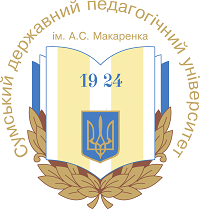GIRL – WOMAN – ELDERLY WOMAN: THE EMBODIMENTS OF CORPOREALITY IN SOFIIA ANDRUKHOVYCH’S NOVEL «CATANANCHE»
DOI:
https://doi.org/10.32782/philspu/2025.9.18Keywords:
gender, corporeality, psychologism, sexuality, traumaAbstract
In contemporary literary studies, the influence of culture on individual corporeality remains a pressing area of research. Thus, the article explores the representation of the female body within the literary space. Fiction frequently reflects dominant narratives of bodily representation, wherein corporeality is portrayed as a vulnerable aspect of female identity, and characters’ lives appear dictated by the body’s influence. Sofiia Andrukhovych’s novel «Catananche» exemplifies this approach.The novel presents three distinct female archetypes, each with a unique personal history conveyed through familial and social relationships. The author emphasizes the differences in sociocultural age models, where corporeality plays a crucial role in shaping personal identity.Taiia’s character is framed within the paradigm of coming of age, where the physical transformation of adolescence becomes a defining factor and serves as a marker of emotional expression. Her character’s development unfolds as she navigates life’s challenges, with human biology intricately interwoven with psychological depth.For Lesia, youth is a central value, shaping a narrative centered on a woman’s struggle with aging. In a culture that idealizes health and youth, she turns to artificial means to maintain her appearance. Here, corporeality is presented as a mechanism of female subjugation, leading to psychological trauma that manifests as an obsessive preoccupation with physical appearance.Zhanna’s character is portrayed through the lens of sexuality. As an older woman, she rekindles her erotic experience, rebelling against established social values and gender stereotypes. The author seeks to reframe aging, positioning it as a natural and integral process of human transformation.
References
Ангелова А. Архетипи старого та старої як структурно-семантичний компонент міфологічного мислення. Науковий часопис Національного педагогічного університету імені М.П.Драгоманова. Серія 07. Релігієзнавство. Культурологія. Філософія: зб. наукових праць. Київ : Вид-во НПУ імені М.П.Драгоманова. 2017. Вип. 38 (51). С. 183–193.
Андрухович С. Катананхе. Київ: Комубук, 2024. 224 с.
Бовуар Сімона де. Друга стать / пер. з франц. В 2 т. Том 2. Київ : Основи, 1995. 392 с.
Гомілко О. Метафізика тілесності: концепт тіла у філософському дискурсі. Київ : Наукова думка, 2001. 338 с.
Ігнатенко І. Краса по-українськи: канони краси в українській традиційній культурі, або що означало бути красивою/им понад 200 років тому. Вісник Львівського університету. Серія історична. Спецвипуск. 2017. С. 858–880.
Качак Т. «Дівчачі тексти»: фемінний дискурс у сучасній українській прозі для юних читачів. Слово і час. 2017. № 4. С. 79–89.
Кісь О. Жінка в традиційній українській культурі (друга половина ХІХ – початок ХХ ст.). Львів : Інститут народознавства НАН України, 2008. 272 с.
Крупка М. «Я» та «Інший»: простір інтимності в романі Софії Андрухович «Сьомга». Слово і час. 2008. №8. С. 40–47.
Максименко С. Медична психологія. Вінниця : Нова книга, 2008. 704 с.
Петренко Т. Вбивство священного оленя на Оболоні – про «Катананхе» Софії Андрухович. URL: https:// chytomo.com/knyzhka-pro-nepohanykh-liudej-iaki-pomyliaiutsia-sofiia-andrukhovych-pro-novyj-roman-katanankhe/ (дата звернення: 02.02.2025).
Резніченко Ю. Мова тіла в українській жіночій повісті 2010-х років: наративний вимір. Сучасні літературознавчі студії. 2019. Вип. 16. С. 147–151.
Сліпенко Н. Як нами керує «міф про красу». URL: https://genderindetail.org.ua/season-topic/tema-sezonu/yak- nami-kerue-mif-pro-krasu-134215.html (дата звернення: 02.02.2025).







